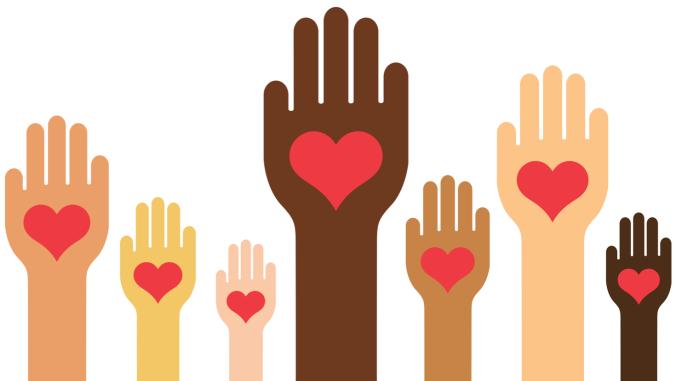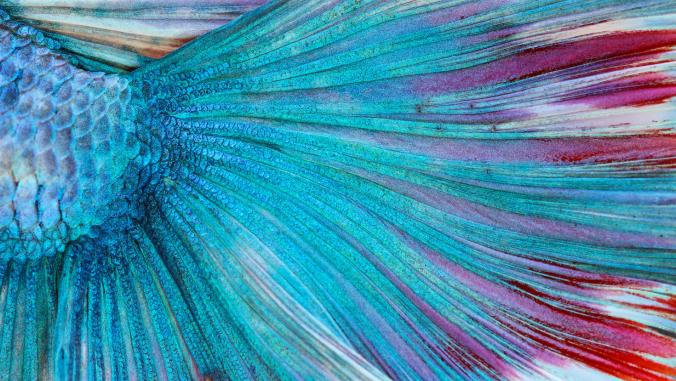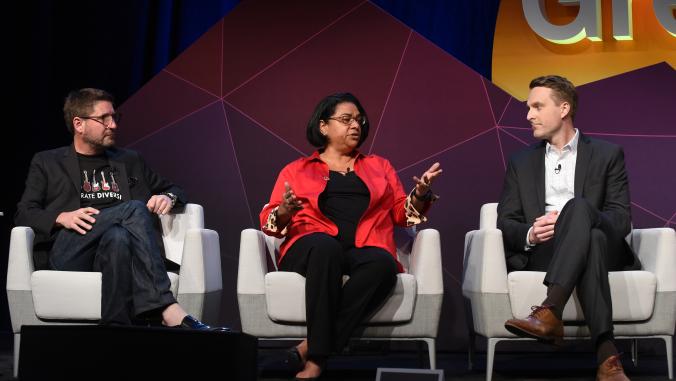Eileen Fisher has designs on keeping clothing out of landfills
Buying recycled items from trusted retailers is the next big fashion trend — and saves billions of tons of clothing from going to waste.

One of the joys of buying new clothing is the rush of owning something that will take on its own history, unsullied by the wear of time or the highs (and embarrassing lows) of the fashion cycle.
Most consumers don't often think about the global journey garments took on their way to the hanger, however, or the footprints they will leave behind after we discard them. That's partly because most fashion companies don't talk about these things.
Fast-fashion hangover
It's not a pretty picture. The average U.S. citizen throws away nearly 70 pounds of clothing and other textiles annually, according to the Council for Textile Recycling — about 21 billion pounds in all in 2009, the most recent data available. That number is projected to reach 35.4 billion pounds of garments by 2019. Most of this — 85 percent — goes to landfills. This means 15 percent of old clothing is donated or recycled, although a mere 5 percent of clothing is unusable for reuse or remake purposes.
The runaway runway waste doesn’t just accrue after the catwalk ends. Textiles, such as cotton, that satisfy our craving for new threads drink up more than 10 percent of all agricultural chemicals and a quarter of insecticides, calculates EcoWatch. And more than half a trillion gallons of water are used to dye these garments, which can contaminate rivers and cause health problems in the people who make them.
The problem is being noticed by companies such as Patagonia that are keen to retrieve unwanted garments from its customers and bring them back to stores for reuse — and even profit. At a recent BSR event on the circular economy, Eunice Heath, global sustainability director at Dow Chemical, spoke with Andy Ruben, a former Walmart sustainability chief and co-founder of sharing economy company Yerdle. They discussed how established companies can keep recycled items looking, and performing, fresh enough to have a material effect on buying habits.
Heath pointed to her own crisp, bright yellow jacket. If she could rely on the quality and color of the garment to last over several cycles of reuse and re-wear, she could trust the circular economy to help her stem the tide of waste from unwanted consumer goods.
The new vintage
It turns out that chemicals may not be needed to enhance a garment’s lifespan indefinitely. Rather, it may take only a little ingenuity and TLC.
"Our goal is to keep everything we manufacture out of a landfill — forever," Cynthia Power, who manages Green Eileen, a takeback program that collects all Eileen Fisher clothing, sorts and resells them at a discount at designated stores. Customers receive $5 for each recycled item, with part of the proceeds benefiting a bevy of nonprofits.
Eileen Fisher is already regarded as a leader in earth-friendly, high-fashion clothing. It has shifted to using organic cotton and linen, recycled polyester and nonhazardous dyes, and aims to be carbon positive by 2020. It tracks its supply chain to ensure worker’s rights. Last year, Eileen Fisher manufactured about 4 million garments; with Green Eileen’s help, it expects the recycling total to hit 1 million. In 2015, Green Eileen brought in 170,000 garments, or 4 percent of the company’s output.
"While this is a lot of work on our part, I believe it is the future," Power told GreenBiz. "We are running out of natural resources and we need to find creative ways to reuse what we already have."
In 2015, Green Eileen brought in 170,000 garments, or 4 percent of the company’s output.
A perennial shade of green
Green Eileen was launched in 2009. It is a separate, experimental company that works on a circular business model. Power said its creation was driven partly by an emphasis on producer responsibility and partly because other brands were doing the same.
"We acknowledge that this particular aspect of the business will only become bigger and bigger," she said. "I feel we are in the key moment of integration right now; it’s becoming clearer every day that Green Eileen can be a part of Eileen Fisher’s larger value proposition, adding to profitability, expanding the customer base and working towards becoming a 100 percent sustainable company."
Green Eileen benefits its parent company, the economy and the environment in three ways:
- Embodying Eileen Fisher’s sustainability values. "By using no new materials, we are lessening our dependence on land-based crops (such as cotton, wool, viscose and linen). We are also creating jobs in the USA with our processing and remanufacturing centers."
- Attracting new customers who may be focused on the environmental impacts of a purchase, or who can buy an authentic Eileen Fisher garment at a lower price.
- Green Eileen is a profitable business and adds to the bottom line of the company more as people discover the company through its stores or new fashion campaigns such as its "Remade in the USA" collection.
Combining quality with a homemade message worked for brands such as American Apparel; but can Green Eileen garments remain as attractive to the average customer as new products? Is there a way to fully transition to recycled clothing as a sustainable business model, for profit and planet?
Is there a way to fully transition to recycled clothing as a sustainable business model, for profit and planet?
From recycling pile, back to the rack
"We certainly acknowledge that the term 'recycled clothing' may have a negative connotation," said Power, but points out that Green Eileen’s "reworn" items are in perfect condition.
Good design starts from the top: Eileen Fisher’s fabric teams assess which materials and textiles hold up over decades. "We have also started discussing how our design processes for new products should be informed by the circular approach." For example, she said, "Could we create panels in our garments where we find the most stains so they could be easily taken out and replaced?"
"Renewed" garments have small damages such as holes and stains, but are mendable. These items even provide a chance for people to connect with their garments through in-house mending workshops, which creates a valuable sense of connection and loyalty to the clothing and the brand.
"Remade" items are old items made into brand-new designs by: re-sewing, or deconstructing pieces and resewing them into new garments; felting, creating new textiles by "mashing fibers together with felting needles"; and overdyeing, or re-dying a piece using natural dyes to cover a stain or discoloration.
It is a cardinal truth of fashion: What’s old can be made new again.
Effortless style
There are a growing number of options for people who can’t get to the store to participate in reusing, reselling or refurbishing their items. Green Eileen, for example, accepts shipments of any Eileen Fisher item.
Other clothing retailers, such as H&M and North Face, use an app to help customers donate unused stuff to local and national organizations that will reuse or recycle it. Both use an app produced by Stuffstr, a Seattle-based startup that aims to put the $7,000 of unused stuff sitting in the average U.S. home to good use by arranging easy pick-up or delivery of items to processing, recycling or donation sites.
"We extend the average use of things by 10 to 20 percent, so it’s not a big ask," said John Atcheson, Stuffstr’s CEO, but because that stuff can leach CO2, "It’s the same impact as removing tens of millions of cars from an environmental standpoint."
Retail’s participation in the circular economy is a fashion trend that isn't likely to fade any time soon.





